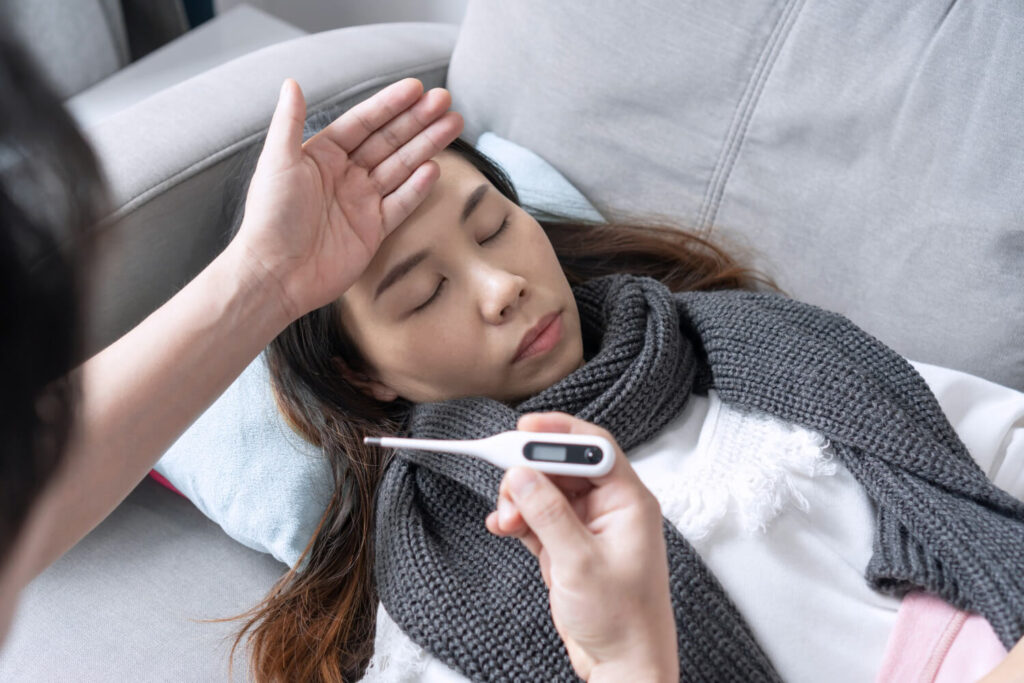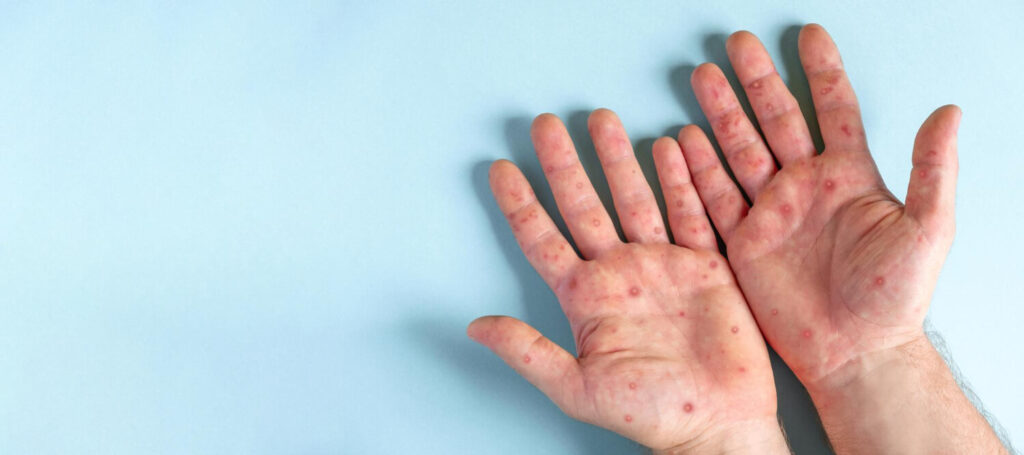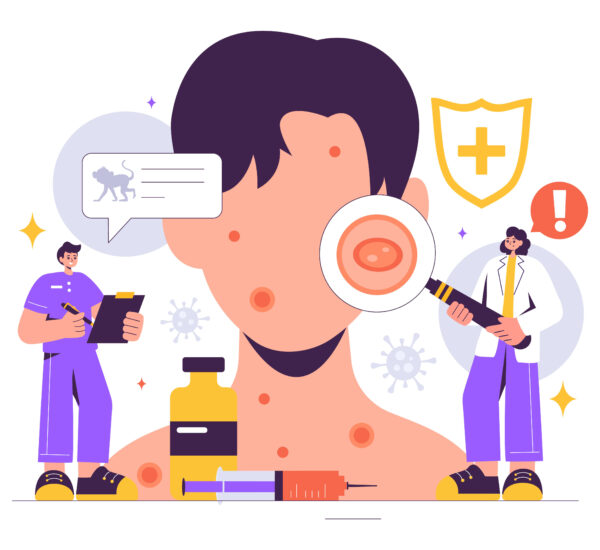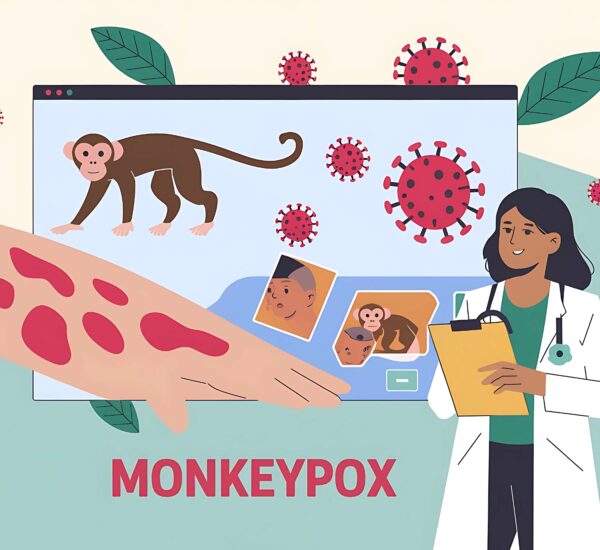In 2022, the threat of Monkeypox or Mpox came to the Philippines. It was unclear which strain of the virus it is, but one thing is for sure, it began a few days after the World Health Organization declared Mpox as a global public health emergency. This case of Mpox came from an individual who didn’t travel outside the country. According to the DOH, the last case of Monkeypox was recorded in December 2023.
However, another confirmed case emerged in August 2024, in which the patient has no history of leaving the country. According to news outlets, the first confirmed case’s source was a patient having an intimate relationship three weeks before symptoms of Mpox appeared.
Currently, there are five confirmed cases in the Philippines, which Filipinos must take seriously. The constant discovery of new cases in the country means Mpox is an active threat to health. In short, people must be ready for what’s to come. In that case, this comprehensive guide can help people ready to face the risk of exposure in the following days.
Understanding Monkeypox: An Overview

Monkeypox (Mpox) is a highly contagious illness that came from the Mpox virus, a category virus from the orthopoxvirus. This condition is endemic in Central and West Africa. It has two known clades, Clades I and II with variants of a and b in each clade.
Take note that this condition has a global outbreak, and one of the casualties is the Democratic Republic of the Congo. According to WHO, they have clade II in 2022, and this year they’ve detected clade I. Meanwhile, clade II has been discovered among recent patients in the Philippines.
It is vital to understand that clade I of Mpox is considered the more severe, which can cause death to its patients. On the other hand, clade II is less severe and often has a survival rate of 99.9%.
Monkeypox Vs Smallpox Vs Chickenpox
When it comes to a better understanding of Monkeypox, it is essential to note that Mpox is not the same as smallpox and chickenpox. While smallpox and Mpox are related due to the same virus origin, chickenpox came from a herpes-related virus.
Moreover, in terms of fatality, smallpox can be more dangerous than Mpox, despite coming from the same variola virus. Around 30-50% fatality can occur if the patient has smallpox, while around 10% fatality with Mpox.
Lastly, smallpox has been eradicated since 1980, while Mpox is still a current public health emergency of international concern.
In that case, it is best to be knowledgeable and updated about the current Mpox cases. So, when Mpox spreads, individuals can do the best practices to avoid further widespread.
People At Risk of Monkeypox
Due to the heavy impact of Mpox, certain groups of people are considered high risk or more susceptible to Monkeypox. For instance, patients like children, pregnant women, or simply those with weak immune systems can have Mpox. When they are exposed to the virus, it’s highly likely for them to have Mpox.
Furthermore, people with HIV can be at risk due to their weakened immune systems. The viral disease might take advantage of the patient’s condition, leading to getting infected.
Mpox Transmission
Just like other infectious diseases, Mpox also involves varying transmission methods. It can involve physical contact like intimate and direct contact. Let’s have a thorough discussion about these methods below!

Intimate transmission may involve the following:
- kissing
- hugging
- skin-to-skin contact
- sexual contact
- massage

Direct contact or close contact transmission may involve the following:
- talking face-to-face for a long time
- sitting next to someone with Mpox
Aside from these methods, it is also possible to get infected with a simple inhalation of respiratory particles like snot, etc. Furthermore, individuals can also get Monkeypox when they use infected materials on and into their bodies like injection, linen, clothes, etc.
Animal-Related Mpox Transmission
On the other hand, Mpox is also possible to occur from animals to humans. The infected animals can transmit through biting and scratching people. For instance, wild animals, specifically small mammals may be carriers of Mpox.
Some small mammals that can carry Mpox are:
- monkeys
- squirrel
Common Mpox Symptoms
Cases like this viral disease involve a range of symptoms that can vary in severity. Most patients with weak immune systems can be vulnerable to this condition. So, they can get infected right after exposure.
Normally, patients can develop symptoms after a few weeks due to an incubation period of 5-21 days. However, some patients may develop symptoms immediately, such as 1 to 21 days after exposure.
Here’s what individuals should monitor during that period:

- chills
- fever
- sore throat
- swollen lymph nodes
- muscle aches and back pain
- low energy or exhaustion
Aside from that, another common symptom that Mpox patients might have is rashes. In some cases, people might first develop this symptom before anything else. The rashes begin with flat sores until they develop into itchy and painful blisters with liquid inside. It can occur from the face and spread to other parts of the body.
After a few days, the blisters or lesions will dry up forming crusts until they fall off and reveal a new skin.
The most common locations of rashes are the following:

- soles of the feet
- palms of the hands
- chest
- near the private area like the groin
- anal area or anus
- genitals
If rashes or other symptoms begin to appear, it’s best to seek help from health professionals like infectious disease doctors. That way they can analyze the situation better and determine if one’s symptoms are Mpox related. Some symptoms may overlap with other conditions such as the common cold or influenza, which means guidance from a doctor is needed. Thus, allowing them to provide an accurate diagnosis to patients.
Recovering from Mpox
During the phase of Monkeypox, it is highly important to follow the recommendations of the healthcare expert. That involves proper handling of rashes and overall health throughout the whole Mpox period. Doing so will help lessen complications like infections and other conditions from occurring.
Patients must be reminded to follow these rules below:
- Stay at home and isolate to prevent transmission of Mpox
- Make sure to sanitize or wash one’s hands with water and soap after touching the lesions
- Avoid using or touching common items in the house to avoid the spread of Mpox
- Wear a mask, especially when around other people
- Do not pop the blisters as it can result in skin infections and slow the healing process
- Prevent shaving as it can affect other areas of the skin that are not infected
- Cover the skin with lesions when other people are around
These reminders are vital for faster healing for patients. If there’s an isolation problem, it’s recommended to ask guidance from a healthcare provider for a better isolation setup and supportive care. There can be cases where Mpox patients stay in a hospital for better monitoring of one’s health.
Frequently Asked Questions
Are there tests available in the Philippines to determine the presence of Monkeypox?
To diagnose Mpox, DOH ensures facilities are equipped to handle potential cases. These facilities have laboratory tests like polymerase chain reaction (PCR) or serological tests to confirm the presence of the Mpox virus. Thus, allowing patients to receive the most appropriate course of treatment, ensuring timely and effective management of the illness.
Is there a vaccine for the Monkeypox virus available in the Philippines?
Currently, there are no vaccinations available yet for Monkeypox virus cases in the Philippines. However, medications for pain and other helpful agents are provided for patients in need to help them recover. It’s best to wait for more updates from DOH about the best possible solution against Mpox despite the rising number of confirmed cases.
How does Mpox rash differ from common rash illnesses like measles?
The rash caused by Mpox differs from common rash illnesses like measles in its appearance and progression. Mpox rash typically presents as fluid-filled blisters that can be painful and may crust over. In contrast, measles rash appears as flat red spots that often start on the face and spread downward. Additionally, the Mpox rash is usually localized to the area of infection, while the measles rash covers the entire body. If any unusual rashes or symptoms appear, it’s essential to seek medical advice promptly for proper evaluation and treatment.
How long do Mpox symptoms last before they heal fully?
The symptoms of Monkeypox can last for 2 – 4 weeks. The duration varies for each individual, but proper care and isolation can help in a speedier recovery. It’s important to consult with a healthcare provider for specific guidance tailored to your condition.
Conclusion
There are now 5 confirmed cases of Mpox in the clade II category. While it is known as the milder variant, it is still vital for Filipinos to have a better understanding of Monkeypox. With well-equipped knowledge, individuals can handle the threat of the Monkeypox virus easily until they reach recovery.
Prevent the spread of Mpox by starting to protect oneself against possible exposure. Book an online consultation with an infectious disease doctor and request more information about the proper management of Mpox.



